 Mysteries
Mysteries  Mysteries
Mysteries  History
History 10 Surprising Stories About the Texas Rangers
 Humans
Humans 10 Philosophers Who Were Driven Mad by Their Own Theories
 Miscellaneous
Miscellaneous 10 Video-Game-Worthy Weapons and Armors from History
 Weird Stuff
Weird Stuff 10 Psychics Who Accurately Predicted Wartime Events
 The Arts
The Arts 10 Pieces of Art Inspired by a Broken Heart
 Health
Health 10 Science Fiction-Sounding New Medical Treatments
 History
History 10 Surprising Facts About the Father of Submarine Warfare
 Space
Space Ten Astonishing New Insights into Alien Worlds
 Weird Stuff
Weird Stuff 10 Bizarre Summer Solstice Rituals Still Practiced Today
 Mysteries
Mysteries Top 10 Haunting Facts About the Ghost Ship MV Alta
 History
History 10 Surprising Stories About the Texas Rangers
 Humans
Humans 10 Philosophers Who Were Driven Mad by Their Own Theories
Who's Behind Listverse?

Jamie Frater
Head Editor
Jamie founded Listverse due to an insatiable desire to share fascinating, obscure, and bizarre facts. He has been a guest speaker on numerous national radio and television stations and is a five time published author.
More About Us Miscellaneous
Miscellaneous 10 Video-Game-Worthy Weapons and Armors from History
 Weird Stuff
Weird Stuff 10 Psychics Who Accurately Predicted Wartime Events
 The Arts
The Arts 10 Pieces of Art Inspired by a Broken Heart
 Health
Health 10 Science Fiction-Sounding New Medical Treatments
 History
History 10 Surprising Facts About the Father of Submarine Warfare
 Space
Space Ten Astonishing New Insights into Alien Worlds
 Weird Stuff
Weird Stuff 10 Bizarre Summer Solstice Rituals Still Practiced Today
10 Weird Ways Real People Got Confused For Their Characters
Celebrities often complain about being trapped by fame. Their identities are swept up with their public personae. Audience members become so bound to these performances that there is never a chance to escape into private life.
For most people, this is not torture. Moping while signing autographs or rattling off a catchphrase is not that bad. Other times, it can be dire. Here are 10 times that celebs could not escape their most famous roles and it led to often tragic circumstances.
10 Drake Hogestyn Was Assaulted For Being A Demon
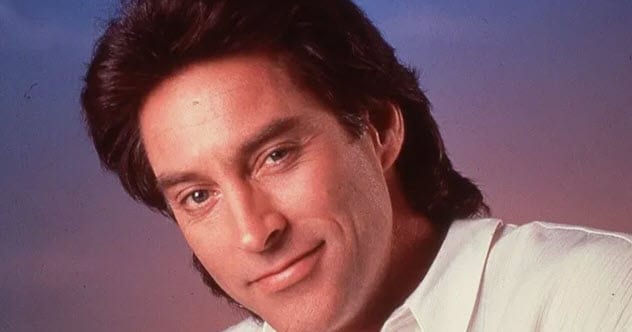
Soap operas have never been known for their restraint. Plotlines are as fantastical as logic, or lack thereof, allows. This same irrational spirit can bleed into the lives of the actors.
Drake Hogestyn has played John Black on Days of Our Lives for more than 20 years. During that time span, Hogestyn has been involved in ludicrous stories of double-crossing family members or people being resurrected as robots.
In one of his many deaths, the soap character John Black was killed off after a season-long battle with demonic possession. Longtime viewer Carl Raymond Cheney did not like this ending. He had his own ideas.
In the middle of the day, Cheney sneaked into Hogestyn’s house in Malibu. Bursting into the room of Hogestyn’s daughter, Cheney shouted, “Where is he? I will cast him out!”
Bible in hand, Cheney intended to exorcise John Black’s demon from the actor. Cheney attacked before the next season of the soap opera aired Black’s return.
Presuming Black was dead, this was Cheney’s one chance to save Hogestyn’s soul. The deranged fan assaulted everyone in the house, including pushing Hogestyn’s wife down the stairs. Joined by his son, Hogestyn beat up the intruder. They tied up Cheney until the cops arrested him.[1]
9 Richard Belzer Is Always Stopping Crime
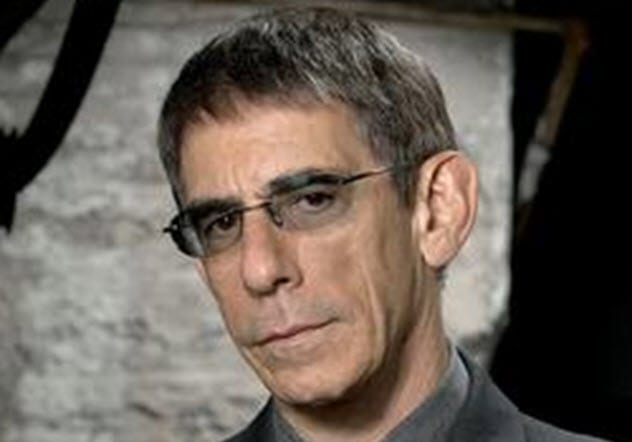
Richard Belzer has probably spent more time playing Detective John Munch than not. After his inception on Homicide: Life on the Street, Detective Munch was a mainstay of television for more than 20 years. He has investigated crimes on The Wire, The X-Files, Law & Order, and even Sesame Street.
All totaled, Detective Munch is the only fictional character played by a single actor to appear on at least 10 different TV shows. When he got bored busting criminals on the small screen, he arrested people in real life.
In 1996, a man ran through the set of Homicide: Life on the Street. He had just stolen over $100 worth of camera film from a nearby Rite-Aid. Trying to evade a pursuing security guard, the perp unknowing interrupted the filming. Rounding a corner, two cops stood with their guns drawn. The thief turned himself in.
The two cops were actually Richard Belzer and Clark Johnson in the middle of a scene. Belzer and Johnson held on to the criminal until the security guard arrived. The real police took it from there.[2]
8 Steven Seagal Helped Take Down The Mafia
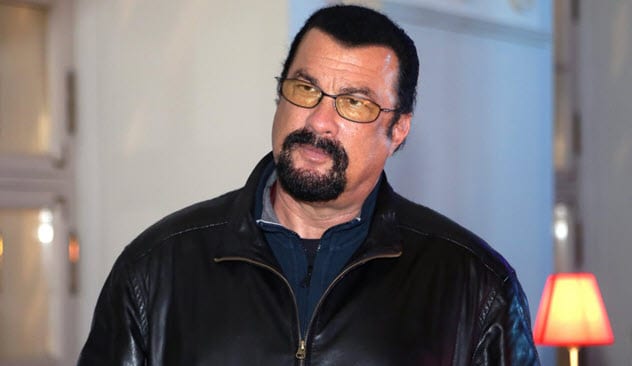
Steven Seagal is not known for being particularly choosy when it comes to his movie roles. In 2000, he was not given much of a choice. Former business partner Julius Nasso approached Seagal with a new contract. Nasso would produce and Seagal would star in movies on behalf of the Mafia.
For each movie, Seagal would have to pay $150,000. The money would fund future movies for the Mafia. Seagal was going to be their gateway to Hollywood millions.
Thanks to movies like Under Siege, the Gambino family believed that Steven Seagal could withstand some intimidation. The tough action star exterior came in handy when one of the mobsters told Seagal that the Mafia had planned to kill him if he did not go along.
Of course, nobody can be totally stoic with a gun in his face. The Mafia repeatedly laughed at how petrified Seagal looked in meetings. He got the last laugh, though.
Serving as a government witness, Seagal revealed the scheme at Peter Gotti’s racketeering trial. Wiretaps from federal officials uncovered Nasso’s role in the extortion, too.[3]
7 Redd Foxx’s Last Laugh
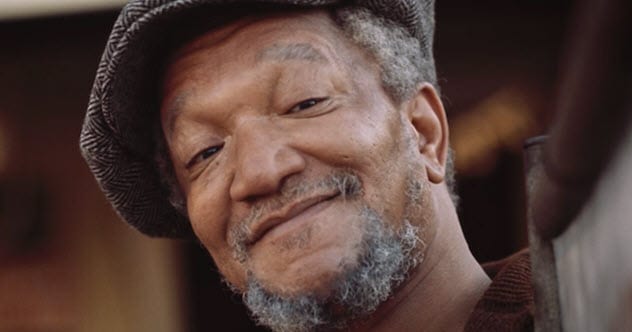
Redd Foxx was hilarious even when he wished he wasn’t. Popularizing the notion of a comedy record, Foxx revolutionized stand-up. His success on vinyl led to even greater triumph with the sitcom Sanford and Son.
Through half-baked schemes, the titular Fred Sanford tortured his long-suffering son, Lamont. As the plans began to fail, Foxx’s Fred could always resolve it by grabbing his chest and saying, “It’s the big one! I’m coming, Elizabeth.” Foxx was so entertaining that he could make cardiac failures funny. They wouldn’t always be.
Years after Sanford and Son ended, Foxx starred in the show The Royal Family. Originally, the series went by the soon-to-be-ironic title Chest Pains.
During one of the rehearsals, Foxx was interviewed by Entertainment Tonight. Producers pulled him aside. The noticeably irritated comedian clutched his chest just like he had hundreds of times before. The pratfall-trained Foxx fell down dramatically. Everyone initially thought that he was just repeating one of his signature bits. He was not.
Nobody helped Foxx as he was having a real heart attack. He eventually received help, but it was too late. He succumbed later that night at age 68.[4]
6 Sherlock Holmes Has Nothing On His Author
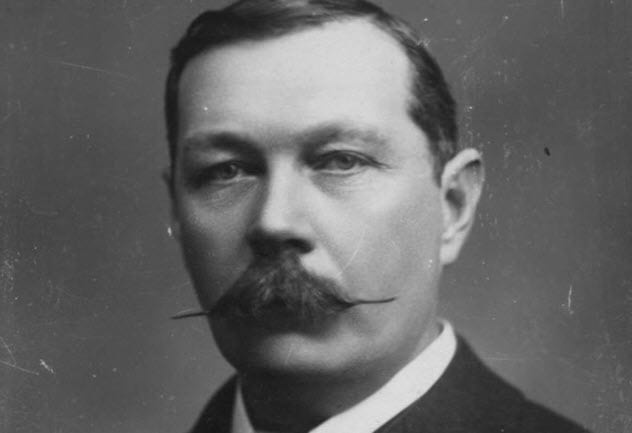
George Edalji was out of options. He had been accused of mutilating horses and livestock. He decided that there was only one person who could solve his case—Sherlock Holmes. With Holmes already busy not being real, Edalji reached out to the character’s creator instead.
Sir Arthur Conan Doyle was no stranger to letters. Multiple mystery fans had reached out to the writer with the hope that Doyle’s Sherlockian insight could crack their cases.
Doyle’s knack for detective work was not limited to the page. Upon meeting Edalji, Doyle noticed that Edalji was reading a newspaper 2.5 centimeters (1 in) away from his face. Doyle concluded that Edalji was shortsighted, so much so that he probably could not sneak around stabbing cows in the dead of night.
More importantly, livestock was still being killed while Edalji was in prison. Turns out that this case did not need expert deduction. Just like one of Sherlock’s stories, justice eventually prevailed. After Doyle personally found the real culprit, Edalji received a full government pardon.[5]
5 Myra Davis And The Psycho Killer

A maniac breaks into a room as a woman screams for help that never comes. Minutes later, she is dead. In a nutshell, that is the story of Marion Crane in Alfred Hitchcock’s Psycho. Sadly, that is not just Marion Crane’s story. Janet Leigh’s iconic performance inspired a generation of slashers. However, no copycat story was more terrifying than the real-life horror of Myra Davis.
Janet Leigh was not the only person in the shower that day. Psycho used two stand-ins on the set. Myra Davis stood in while the lighting was adjusted. Marli Renfro was the actual body seen in the shower during Norman Bates’s infamous attack. Decades later, the actresses had faded from public memory.
In 1988, Davis was long retired from acting. Old and alone, she hired a handyman named Kenneth Dean Hunt to help around the house. By this point, Hunt had spent quite a bit of time in mental hospitals and juvenile correctional facilities.
Brushing with a relative celebrity may have made him even more violent. According to one theory, he was fixated on Psycho and had fantasies of replicating the shower scene. Hunt raped Davis and strangled her with her underwear. She was 71. Hunt evaded justice for years until he killed another woman about a decade later.[6]
4 Allen Funt Turned A Hostage Crisis Into A Joke
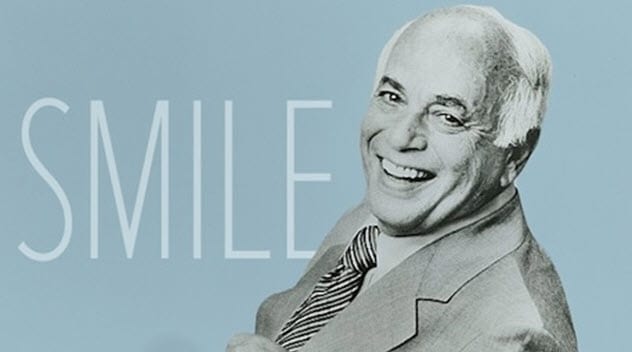
Everyone thought that Allen Funt was lying. They had a good reason. Lying was all that Funt was known for. As the perennial host of the 1960s TV show Candid Camera, Funt made his name from tricking people.
Candid Camera changed television forever by turning the focus on the American people. For the first time, the public could be part of the show at any moment. Upon hearing the show’s catchphrase, “Smile, you’re on Candid Camera,” the person breathed a sigh of relief knowing that whatever wacky moment had just happened was only a prank.
Not everything is a joke, though. In 1969, political radicals hijacked a passenger plane. Holding the pilot at knifepoint, they redirected the plane to Cuba. While those in the cockpit were panicking, the people in the cabin were celebrating.
By a bizarre coincidence, Allen Funt was sitting in first class. When he was noticed, one woman assured her fellow passengers that this was all just Hollywood magic. Convinced that they were about to be on TV, the stewardess started pouring champagne.
Peeking out of the door, even the hijackers could not believe what was going on. Funt protested the whole time that this was all real. Like the boy who cried “camera,” he was ignored.
No reveal ever came. Instead, the plane landed in Havana. The hostages filed out of the cabin, but they were no longer in a laughing mood. Summing up the ordeal, one passenger turned to Funt and said, “Smile, my ass.”[7]
3 Superman Saved The Day From Pinochet
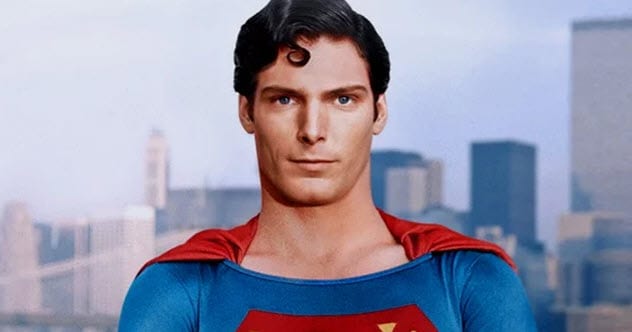
By 1987, Chilean dictator Augusto Pinochet had proved himself to be one of the great supervillains in the world. His regime had killed about 2,000 citizens. Nearly 80,000 more had been tortured and interned. Additional hundreds had disappeared off the streets.
It was a dire situation. When Pinochet threatened to execute 77 prominent Chilean actors if they stayed in the country, everyone knew it was more than just an idle threat. Novelist Ariel Dorfman needed a hero. He got one in Christopher Reeve.
When Dorfman first called, he had not met Reeve. In his desperation, Dorfman had called every celebrity he knew in the hope that one of them could bring attention to the situation.
Familiar with the Superman franchise, Dorfman reached out to Reeve, who agreed to help. Presumably in an airplane, Reeve flew to South America. Together, the two men organized a rally to save the threatened actors.
Less bulletproof than his character, Reeve did not worry about the very real threats to his life. As he marched in the front of the crowd, his status brought international press. Chilean newspapers printed political cartoons portraying Pinochet losing a fight against the Man of Steel.
Pinochet bowed to public pressure and let the actors live. For his service, Reeve received numerous humanitarian awards. Echoing his most famous motto, he fought for truth, justice, and the Chilean way.[8]
2 Harpo Marx Was Too Funny To Be A Spy
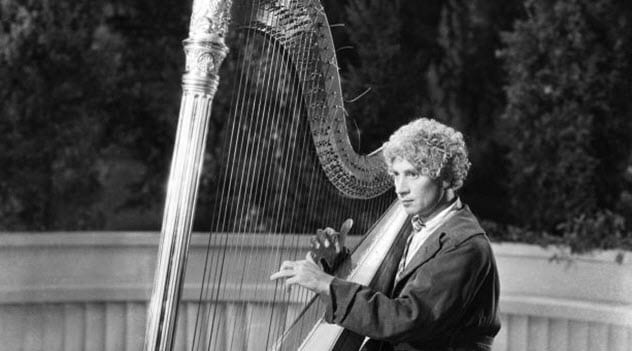
In 1933, Harpo Marx had a simple goal. He wanted to be the first US entertainer to tour the Soviet Union. The United States government had a different idea. They approached the beloved comedian with an offer. Harpo would tape an envelope to his leg and smuggle secret messages out of the Soviet Union. That same year, Harpo would play a spy in the movie Duck Soup. His real-life spy mission would be good practice for the film role.
Danger broke out early in the operation. For companionship and safety, Harpo traveled alongside other Americans. Absentmindedly, one of them exchanged dollars for rubles. A person could be executed for this offense.
Upon crossing the Poland-USSR border, Soviet officers pulled the travelers aside. Suspicious of the Americans, the Soviets searched Harpo’s bags. They pulled out various items, including steel kitchen knives, revolvers, a dozen wigs, costumes, makeup kits, and his signature harp. Though it was for the wrong reason, they suspected Harpo of being a spy.
However, his fellow Americans pointed out that these were all props in his act. He was allowed to go on and perform for Soviet Foreign Minister Maxim Litvinov. Harpo’s schtick nearly ended the mission before it began. It would also save it.
On the comedian’s return to the US, his train was again boarded near the Polish-Soviet border. With a secret packet of letters now strapped to his calf, Harpo was terrified that his cover was blown.
But the Soviet commanding officer did not want to kill him. Instead, they were throwing a feast in honor of his successful performances. Luckily, Harpo was used to keeping his mouth shut.
Having narrowly avoided death, Harpo spent the remaining week in a panic. For the next seven days, he never took the packet off his leg. Waiting to return to the US, he gave his leg the biggest scratch of his life.[9]
1 The Disgraced Psychic Who Tried To Stop The Lincoln Assassination
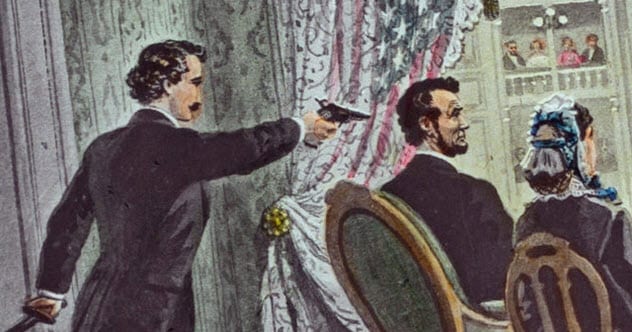
Death haunted the Lincoln family. Willie Lincoln was only 11 when he died from typhoid fever in 1862. Both Mary Todd and Abraham Lincoln had a hard time coping with the devastating loss. While Abraham was thrown into an increasingly severe depression, Mary Todd turned to spiritualism.
Mary Todd held multiple seances in the White House in the vain attempt to talk to Willie again. Her favorite spiritualist was Lord Charles Colchester. Famous for his many powers, Colchester could allegedly read inside sealed envelopes, communicate with the dead, and see into the future.
Abraham Lincoln did not believe that any of this amounted to more than just sleight of hand. He dispatched journalist Noah Brooks to prove that Colchester was swindling Mary Todd in her time of grief.
During one of the seances, Colchester claimed to summon a ghost to play a set of instruments on a table. In the darkness, noises appeared from the shadows. Quickly, Brooks pulled out a match. Colchester stood there holding a drum.
Worried that Brooks could now expose him as a fraud, Colchester attempted to blackmail the First Lady. But he was discredited as a con man, and the Lincolns refused to talk to Colchester again.
It is tragic that Lincoln cut off ties. Colchester had one prediction left. It did not come from the spirit realm. Instead, Colchester had heard it from his new drinking buddy, John Wilkes Booth.
Following his sister-in-law’s death in 1863, Booth had reached out to Colchester. From there, a budding friendship started. In the weeks leading up to the assassination, Colchester and Booth were still hanging out together.
During these drinking bouts, the future assassin likely confided his plan to the psychic. Days before his death, Lincoln said that Colchester had told him about assassins in Washington. Convinced that it was a hoax, Lincoln ignored the warning. Colchester was famous for lying about seeing the future. The first time that he really could, nobody believed him.[10]
Read about real people who actually inspired fictional characters on Top 10 People Who Inspired Iconic Fictional Characters and 10 Fictional Characters Based On Real People.








